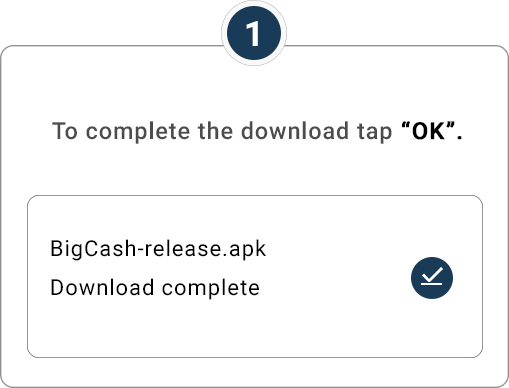Indian rummy card game stands as a widely favoured iteration of the classic rummy game, accommodating a player count ranging from 2 to 6 participants. This variant boasts diverse adaptations, each featuring nuanced rule differentials. Moreover, it goes by alternative names such as Paplu or marriage rummy. Cash Rummy is also famous among Indian citizens.
It is a popular variant of the classic rummy card game, played with decks of standard playing cards. One of its distinguishing features is the inclusion of wild jokers, which add an element of unpredictability and excitement to the game. These jokers can be either selected from the deck or determined by drawing a card randomly. With the advent of technology, Indian Rummy has seamlessly transitioned to online platforms, allowing enthusiasts to indulge in thrilling matches from the comfort of their homes.
Additionally, each deck contains printed jokers, which serve as versatile substitutes for missing cards, enhancing the strategic depth of the game. Indian Rummy remains a beloved pastime, blending skill, strategy, and chance into an exhilarating gaming experience for players of all ages. You can also win real cash as you can play it as a cash game. BigCash is one of the best Rummy App in India for rummy cash game you can play with real players and win real cash straight from your home. Here you can play Rummy Tournament and win big prizes.
Introduction to Indian Rummy
-
Setup: Indian Rummy is typically played with 2 decks of standard 52 cards each, including printed jokers. One card is randomly selected as the wild joker. Players are dealt 13 cards each in a cash game, and the remaining cards form the closed and open decks.
-
Objective: The objective of Indian Rummy is to form valid set and sequences with the cards dealt to you.
-
Valid Set and Sequences: A valid set consists of 3 or 4 cards of the same rank but different suits. A valid sequence comprises 3 or more consecutive cards of the same suit. Printed jokers and wild jokers can be used as substitutes to complete sets and sequences.
-
Gameplay: Players take turns in clockwise order. On each turn, a player must draw a card from either the closed deck (top card face-down) or the open deck (top card face-up). The player then discards one card to the open deck.
-
Melding Cards: As players draw and discard cards, they aim to form valid sets and sequences. Once a player has formed at least two sequences, one of which must be a pure sequence (without a joker), they can declare by placing their unmatched cards on the table.
-
Scoring and Winning: After a player declares, all players reveal their cards. Unmatched cards are counted, and the player with the fewest points wins the round. Points are assigned based on the value of unmatched cards. The winner receives points based on the value of unmatched cards from the other players.
-
Online Rummy: In the realm of online rummy, the rules remain the same, but the game is facilitated through digital platforms. Players can join cash games or tournaments and compete with opponents from around the world.
-
Strategy and Skill: Indian Rummy requires strategic thinking and card management skills. Players must decide which cards to pick, discard, and meld to maximise their chances of winning.
Different Variants of Indian Rummy
These are the various categories of rummy games.
Deals Rummy:
This type involves a fixed number of Deals, ranging from 2-player 1-deal to 6-player 3-deals matches. Players receive a predetermined number of chips at the beginning of each game. If you win a deal, your chip earnings are determined by the scores of other players. Depending on the specific version being played, the player with the highest chip count at the end emerges victorious.
Pool Rummy:
The primary objective in Pool Rummy is to avoid exceeding a particular score. Pool rummy encompasses different versions such as Pool 61, Pool 101, and Pool 201. This variant accommodates 2 to 6 players, and the winner is determined when all opponents (excluding the winner) surpass a predefined points limit (61, 101, 201).
Points Rummy:
Points rummy stands out for its fast-paced and entertaining nature. In this rummy variation, the goal is to maintain a minimal score and declare victory before your opponent.
Rules of Indian Rummy
In the game of Indian rummy, participants are dealt a hand of 13 cards at the outset. Their objective is to form legitimate sequences from these cards. The regulations of Indian rummy dictate that these sequences can take the form of pure sequences, which are comprised of 3 or 4 consecutive cards from the same suit, impure sequences, involving 3 or 4 successive cards with the assistance of a joker, and triples, which consist of 3 cards bearing the same value but different suits.
Terms Used in Indian Rummy?
What is a Sequence?
In rummy, a sequence is a collection of three or more cards from the same suit arranged in a particular order. There are two types of sequences Pure and impure.
Pure Sequence: A pure sequence is a sequence that is formed without the use of a joker card. However, you can also use a wild card joker of the same suit to create a pure sequence.
Impure Sequence: Any sequence with a joker card is considered an impure Sequence.
What is a Set In Indian Rummy?
A set in rummy consists of either three or four cards sharing the same rank but with different suits. It is important to note that both printed jokers and wild jokers are permissible in a set. Unlike sequences, which can be either pure (without jokers) or impure (with jokers), sets do not have this distinction; a set remains a set regardless of whether it contains a joker. Moreover, creating sets during the game is a voluntary choice and not a compulsory action.
What is a Joker In Indian Rummy?
If the table has 2 players, a single joker is employed; if there are 6 players, then 2 jokers are utilized. In the game of rummy, these jokers serve the purpose of creating an impure sequence or fulfilling a triple set. Following the distribution of cards, an additional card is chosen at random from the remaining deck to assume the role of a Joker.
How to Play Indian Rummy Online?
In order to engage in online Indian rummy, it's necessary to participate in a rummy table or tournament provided by BigCash platform. After joining, the individual who picks the higher card will initiate the game. Subsequently, players take alternating chances to draw and discard cards to accomplish their sets. The gameplay continues until a player either announces their declaration or chooses to drop out.







.webp)
.webp)
.webp)
.webp)
.webp)

.webp)



